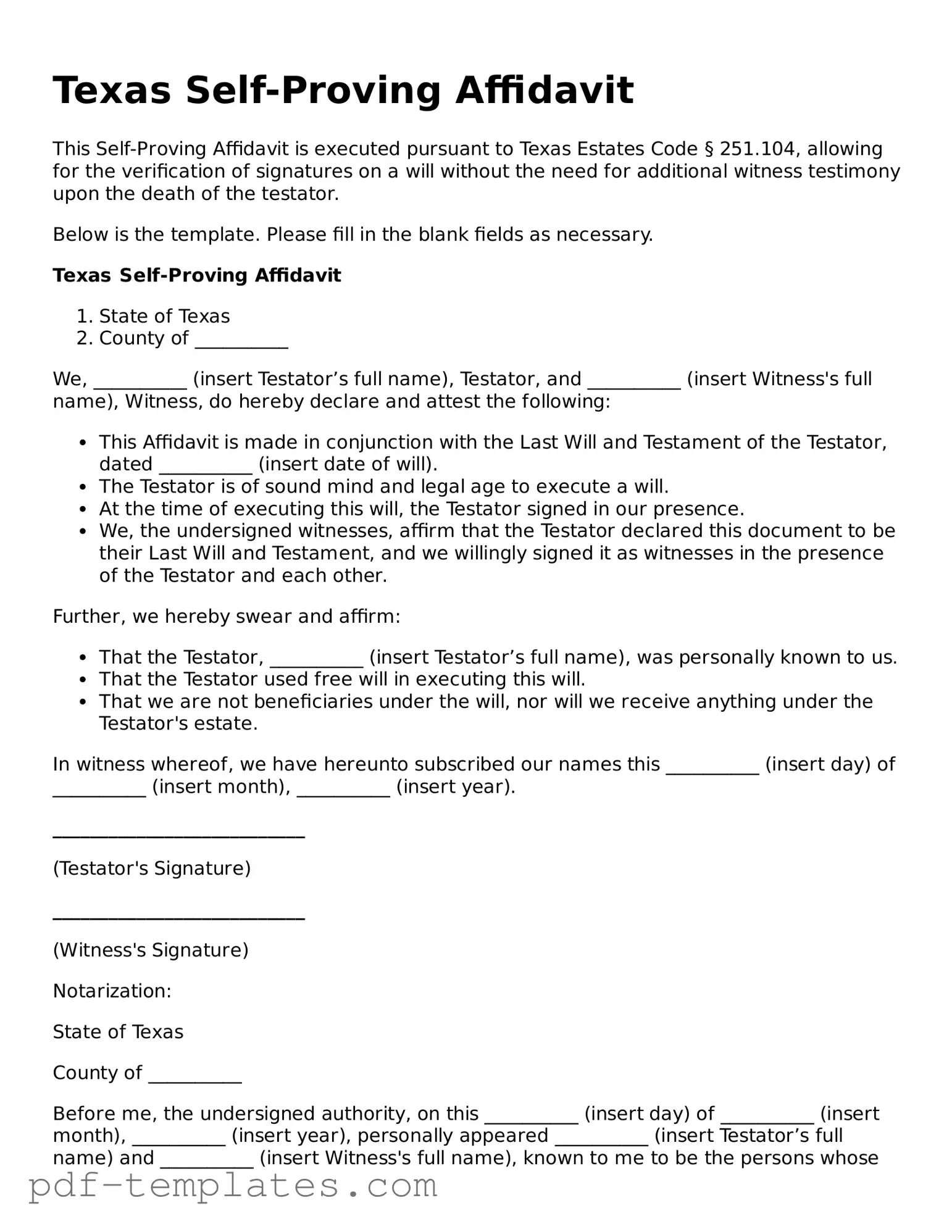The Texas Self-Proving Affidavit form serves a crucial role in the estate planning process, particularly for those looking to streamline the probate of their wills. This form allows testators to affirm the validity of their wills without requiring witnesses to testify in court after their death. By executing this affidavit, individuals can save their loved ones from the often complex and time-consuming process of proving a will's authenticity. The form includes essential information such as the testator's name, the date of the will, and the signatures of both the testator and the notary public. In Texas, this self-proving method can significantly reduce the potential for disputes among heirs, making it a valuable tool for ensuring that a person's final wishes are honored. Understanding how to properly complete and file this affidavit can help individuals avoid common pitfalls in estate planning and provide peace of mind for themselves and their families.
